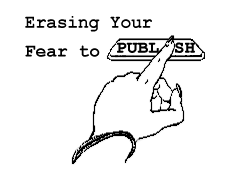4 Ways to Write Beginnings That Grow with Your Story

Your story’s opening line, first few pages, and first chapter are responsible for compelling readers to keep reading. Known as the story hook, these frontline elements must grab attention, build curiosity, and entice readers to find out what happens next. Story beginnings have many simultaneous functions that include introducing primary characters, conflict, and the protagonist’s motivating goal and emotional need.
The start of a story tells readers, "This is a journey you have to take.”
With so much riding on a story’s first few pages, it’s no wonder authors often get caught up in a never-ending first chapter editing loop. As the story develops, the beginning will have to change to match. Let’s look at some strategies to keep writing forward while holding space to strengthen the story hook.
Plot Focus: Build to the Inciting Incident
The inciting incident is the first major plot point occurring within the first ten percent of a story. This is when the protagonist’s world is shaken up, propelling the story in a new direction. In a story’s first draft, being aware of what the inciting incident is and its impact on your characters might provide enough insight to write through and beyond the beginning hook without getting stuck refining.
Character Focus: Set Up the Protagonist’s World
In the first few pages, focus on setting up your protagonist’s world before whatever happens in the inciting incident disrupts them. Introduce their initial emotional state, the challenge they face, and the goals they have at the start. These internal stakes will be measured as the protagonist evolves and adapts throughout the story, and keep readers rooting for them.
Writing Technique: Keep the First Pages Adaptable
Try looking at the first pages as placeholder text when you start writing. Keep the opening pages loose and give yourself permission to revise as you discover who your protagonist really is as the story progresses.
Writing Technique: Note Revisions to Make Later
Instead of revising the first pages over and over, keep a list of revisions you want to make down the line. Notice what will need to change, but resist the urge to go into deep revision until you complete the first draft. Noting what will change at the story’s start should be enough scaffolding to keep writing forward.
Try not to worry about nailing the story hook at first because so much changes along the way. Concentrate on writing the full story, then circle back and revise the beginning. When you reach “the end,” go back and craft a perfectly tailored story hook that will launch readers into the tale you’ve crafted for them.
For more tips on how to immerse readers in your story, watch my Ask an Editor session with Copy Editor Lila LaBine, “How Can I Hook Readers With My Story?”
